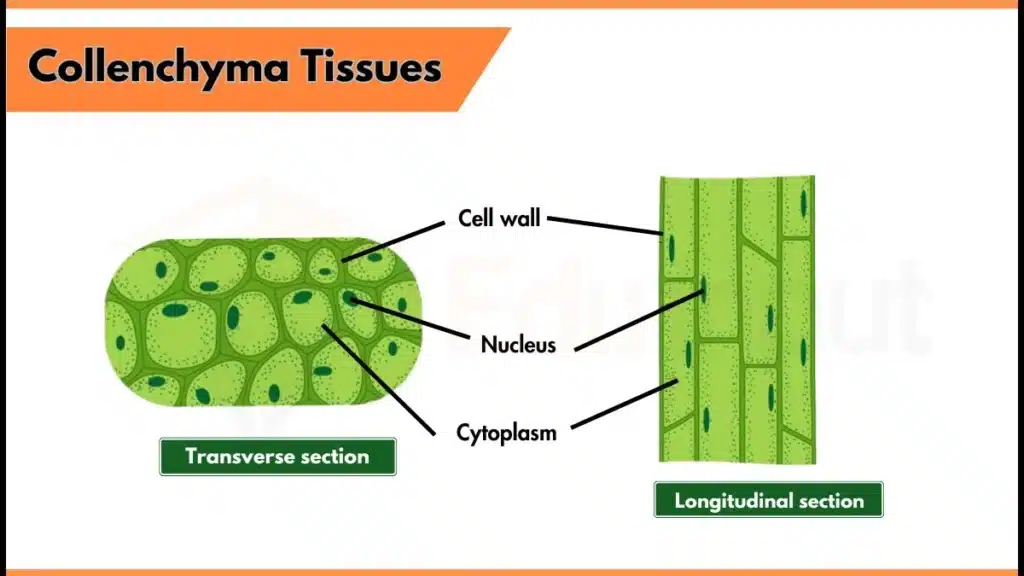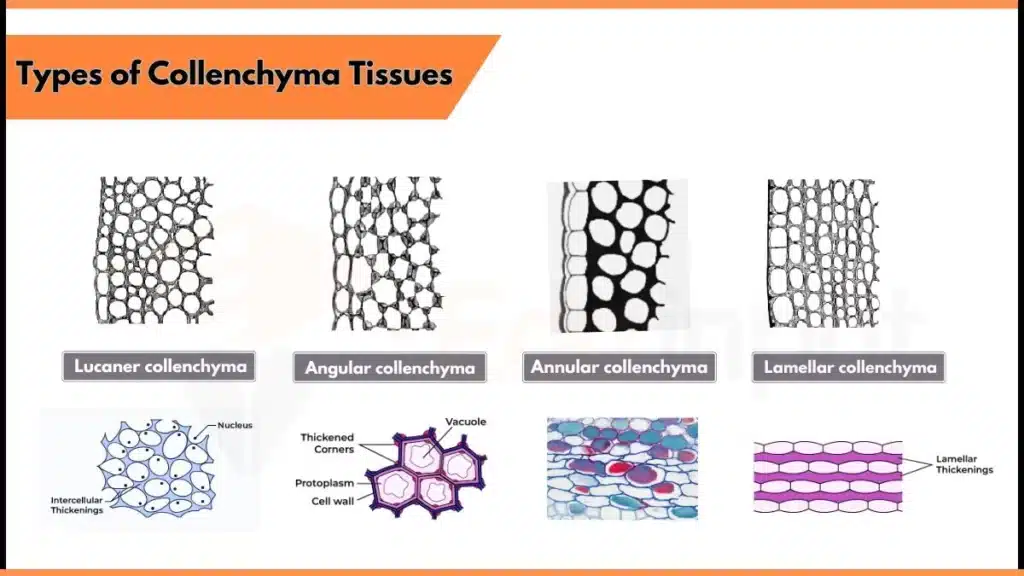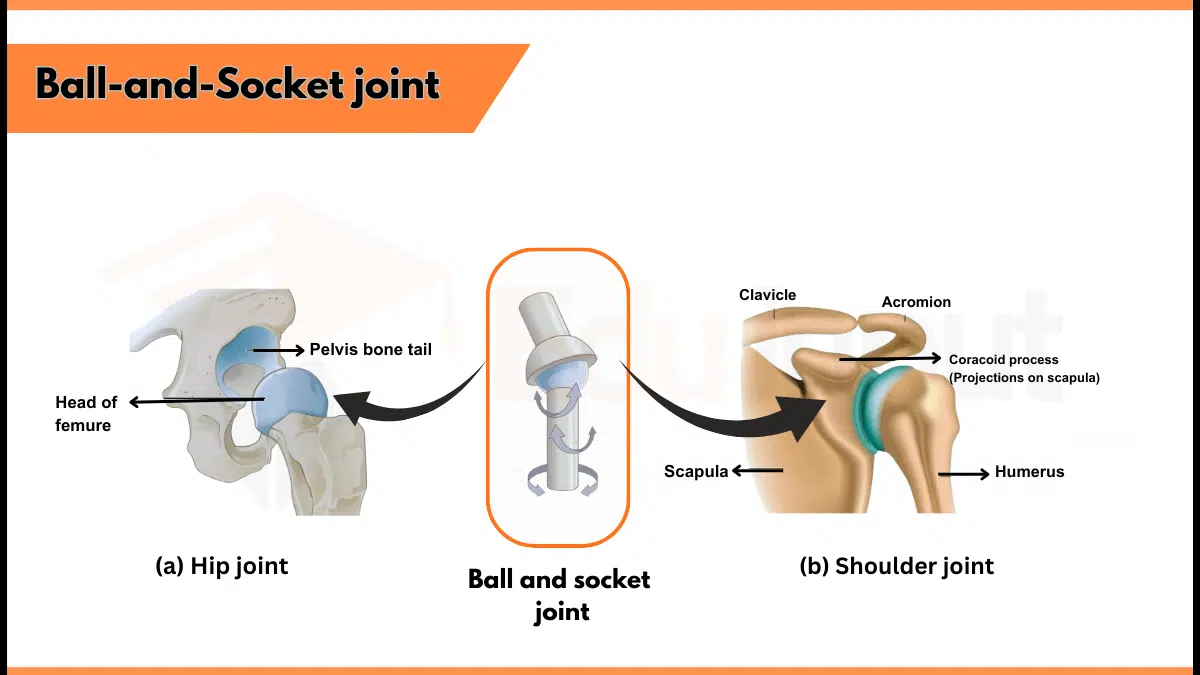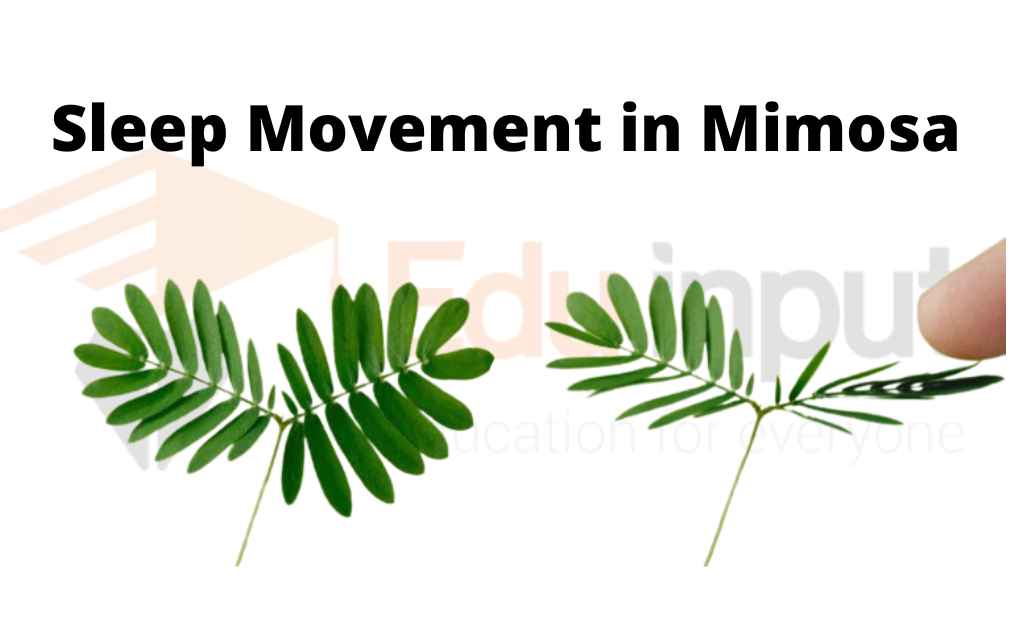Collenchyma Tissue- Definition, Composition, Types, and Functions
What is Collenchyma?
Collenchyma is a living plant tissue that forms the ground tissues in plants. It provides support to growing stem and leaves by giving them strength and flexibility. It contains irregular and thickened cell walls composed up of cellulose and pectin.

Collenchyma works with parenchyma (soft tissues that help photosynthesis) and sclerenchyma (rigid support tissues) to maintain the plant structure.
As additional support, collenchyma can also form fibers or strips, and the thickness of their cell wall can increase due to mechanical stress like wind.
Collenchyma Composition
Collenchyma cells have a thick cell wall, which consists of the following substances:
- Cellulose gives strength and structure
- Pectin provides thickness to walls
- Hemicellulose supplies support to structure
- Proteins present in the walls
The layers in the cell wall have alternating compositions: one layer is enriched with cellulose and poor in pectin, while other is high in pectin and low in cellulose. These layers provide a coated look to cell wall. Sometimes, the cellulose-rich layer may contain lignin, but it’s a rare condition.
Collenchyma cells have protoplasm which allows them to remain metabolically active, helping in repair and growth in plants. The primary role of this protoplasm is to provide flexibility and support to plants.
Sometimes, collenchyma cells also have chloroplasts (helps in photosynthesis) and tannins (protects plant from pests or infections).
Types of Collenchyma Tissues
On the basis of cell wall thickness, collenchyma is classified in 4 types:

1. Lacunar Collenchyma
These cells have intercellular spaces, and the cell wall is mostly thick around these spaces.
2. Angular Collenchyma
This is the most common type of collenchyma. The cell wall is thick at the corners which gives cells an angular shape.
3. Annular Collenchyma
In annular collenchyma, the cell wall is evenly thickened on all the sides.
4. Lamellar Collenchyma
In lamellar collenchyma, the cell wall thickens unevenly, but the thickening forms continuous layers.
Functions of Collenchyma Tissues
Mechanical Support
The primary function of collenchyma cells is to provide mechanical support and rigidity to plants through thickened cell walls. It helps them handle mechanical stresses like bending and stretching.
Flexibility
While giving support to plant organs, collenchyma also maintain flexibility. Due to flexible nature, they allow plants to bend and move without breaking.
Nutrient Storage
They store nutrients in their living protoplasm. These nutrients include lipids and starch.
Prevents Damage
The supportive and flexible nature of collenchyma cells prevent damage to plant parts.
Defense Mechanism
They provide protection to plants from pests and mechanical stress. This is done by storing antibacterial chemicals, such as Solanum tuberosum agglutinins (carbohydrate-binding proteins/ lectins). That’s how their defense mechanism works.
Photosynthesis
Some collenchyma cells may have chloroplasts, which enables them to perform photosynthesis.
Support in Mature Plants
In mature or old plants, collenchyma may become hardened (sclerified) and offers additional mechanical support.
Top of Form
Bottom of Form






Leave a Reply